Mercedes is testing the EQ C, its first all-new electric model, in the Arctic Circle, offering our spy photographers a chance to capture an unfinished prototype during development.
Due for reveal in 2019 ahead of arriving on roads the year after, the all-electric SUV, which measures slightly larger than a GLC, will rival the Audi E-tron, Jaguar I-Pace and Tesla Model X – marking Mercedes’s first entry into the purpose-built EV market.
Mercedes previewed the EQ C when it revealed the EQ Concept at the 2016 Paris motor show. That car used a twin-motor powertrain that delivered more than 400bhp, suggesting the standard EQ C could be more potent than even the Mercedes-AMG GLC 43, which has 362bhp.
Built on a newly developed Electric Vehicle Architecture (EVA) platform constructed from a combination of hot-formed high-strength steel and aluminium, the EQ C uses a new wiring loom that enables its driveline to send up to 100% of torque to the front or rear wheels. The loom essentially takes the place of a propeller shaft between the two motors, which are located on each axle, but negates the need of a shaft tunnel in the floor – improving cabin space.
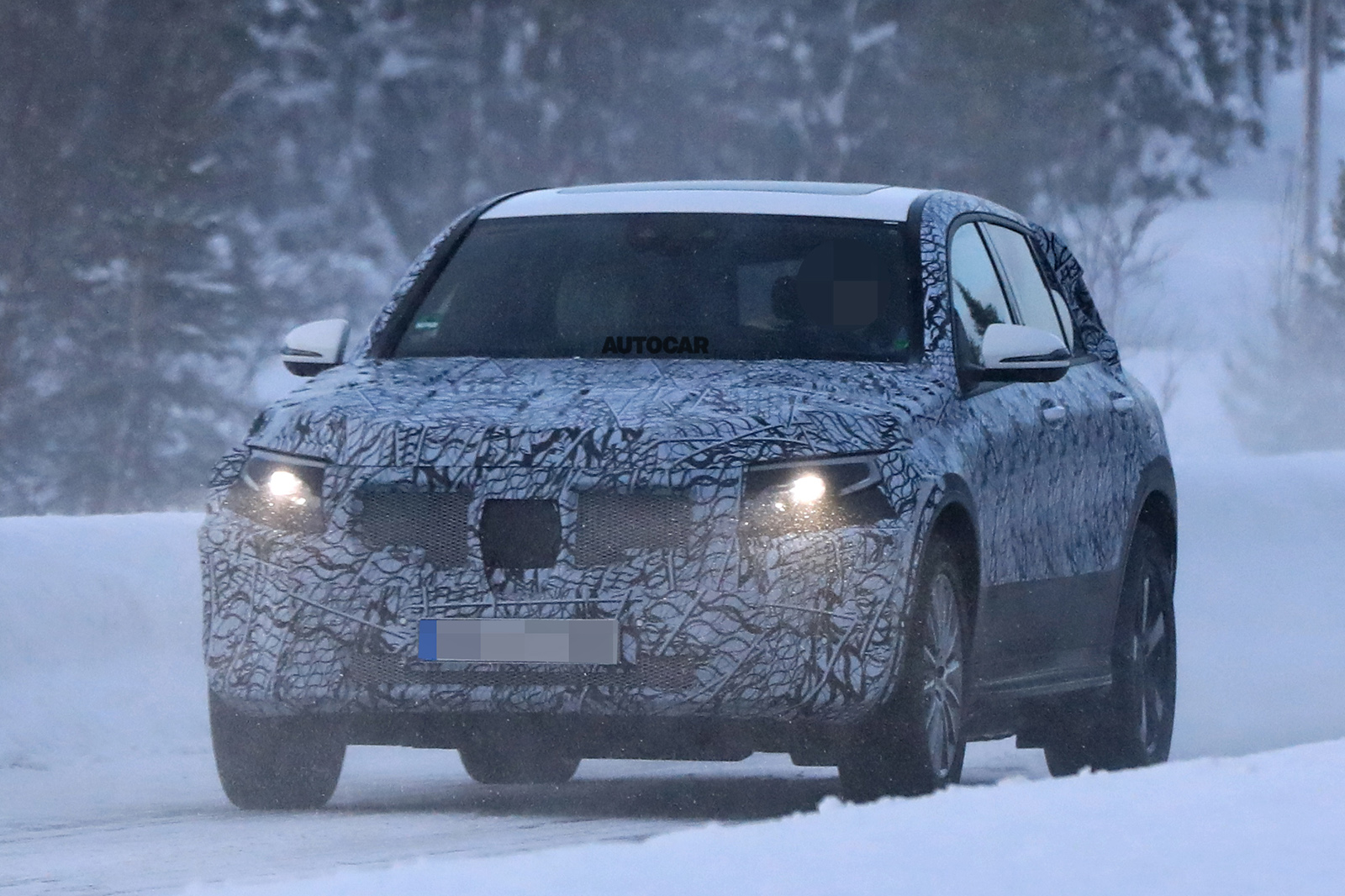
The flat floor that holds the EQ C’s lithium-ion batteries can clearly be seen on the EQ C development car, which has smooth lower sections to the side sills. The weight of the batteries is likely to ensure the EQ C tips the scales at around 2000kg, but the torque of the electric motors should ensure straight-line performance will be comparable with lighter models.
A 0-62mph time of under 5.0sec is predicted, meaning the EQ C will almost certainly be as quick as the GLC 43. Conversely, when driven in a less sporting manner, the car is expected to have a range of more than 310 miles on a single charge – which would align the model almost directly alongside the Audi E-Tron and Jaguar I-Pace. Tesla claims the Model X can eke out up to 351 miles on one charge.
Although heavily camouflaged, the development EQ C’s design links with the GLC are obvious. Mercedes designers have chosen not to give the brand’s first purpose built EV a new look that flaunts its zero-emission credentials, but rather to align its design closely with the rest of the SUV line-up.
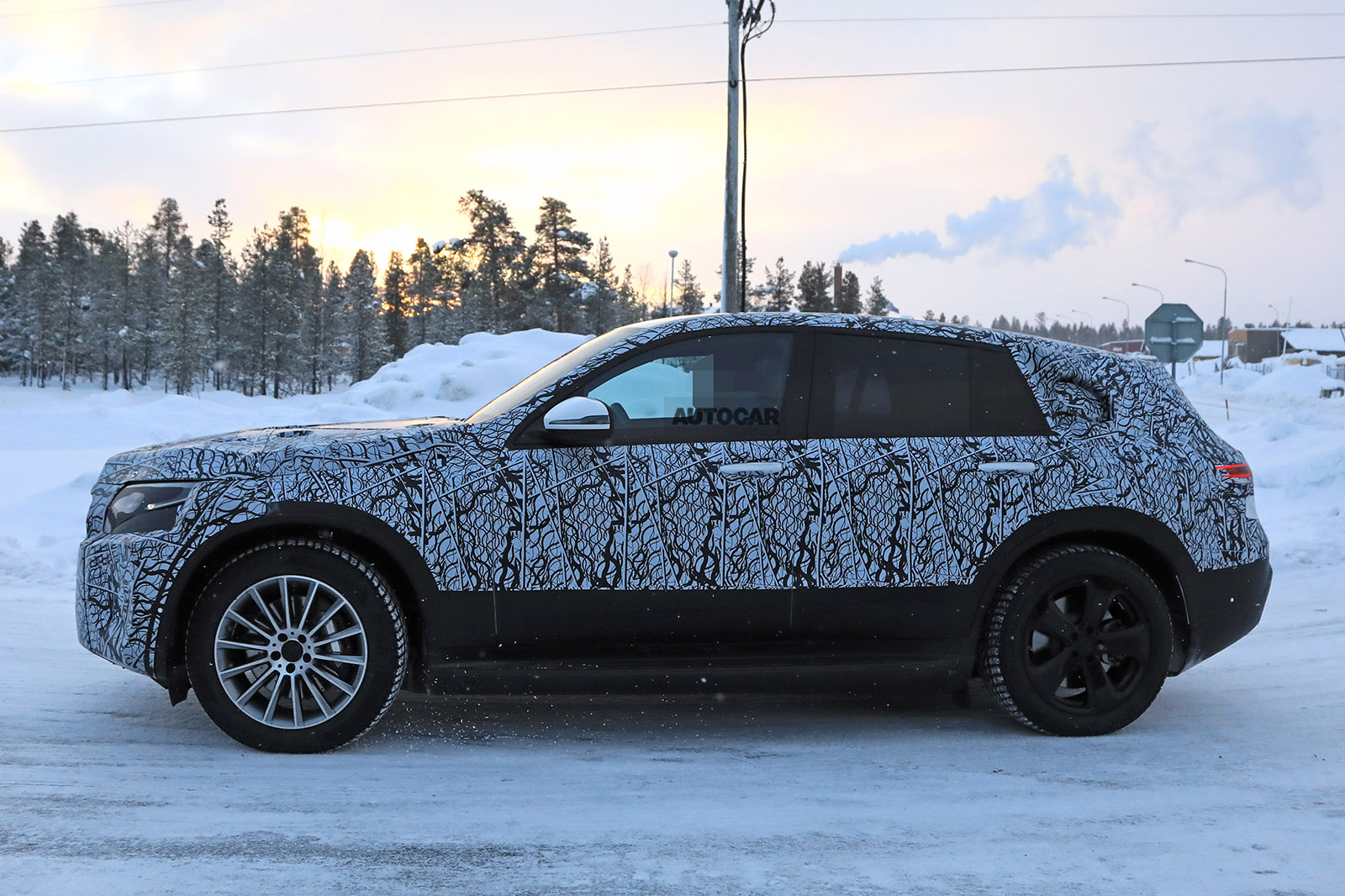
The model will, however, adopt several aerodynamic features to reduce drag. The car will conceal its wipers beneath a flap along the trailing edge of the bonnet, while its lack of grille and flat underside will be significant features to enhance the body’s slipperiness.
Inside, the EQ C will feature Mercedes’ next-generation infotainment and digital technology. The EQ Concept previewed how it could look, with a wide screen that spans half the length of the dashboard, as well as touch screen controls between the driver and passenger – similar in concept to that of the latest Range Rover Velar. Like the exterior, expect much of the EQ C’s cabin to borrow much of its design from other Mercedes models.
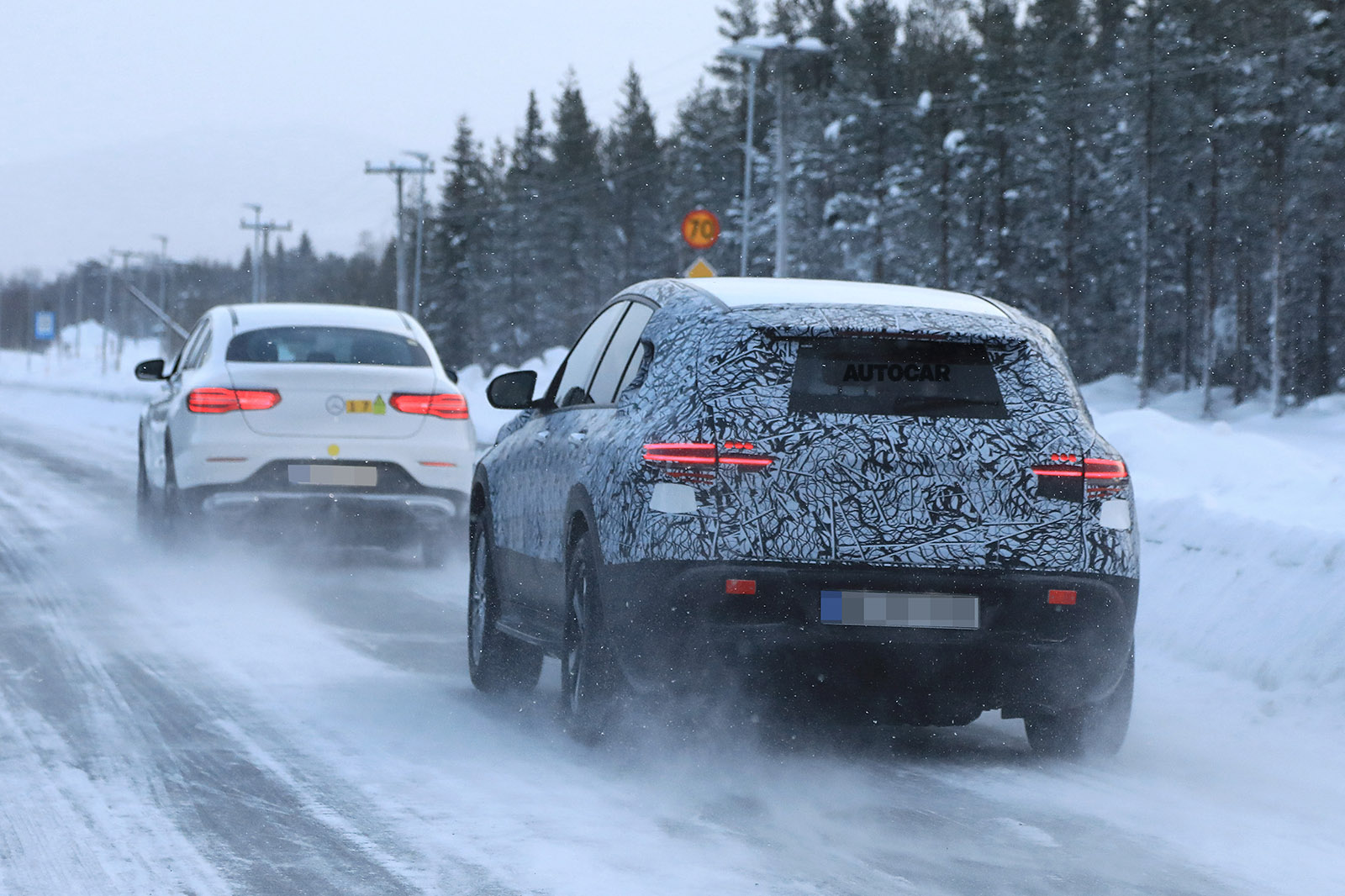
EQ C rivals, the I-Pace and E-Tron, are due to be launched later this year, leaving the EQ C in their wake. But Mercedes will quickly follow the EQ C with an EQ A, an all-electric hatchback that was previewed in concept form at last year’s Frankfurt motor show. That car, due on sale in 2020 as the entry point in the EQ line-up, will use a twin-motor setup that produces around 268bhp more than 369lb ft of torque – figures that come from the EQ A concept.
More content:
Mercedes EQ concept: first ride
2019 Audi E-Tron Sportback to take on Jaguar I-Pace

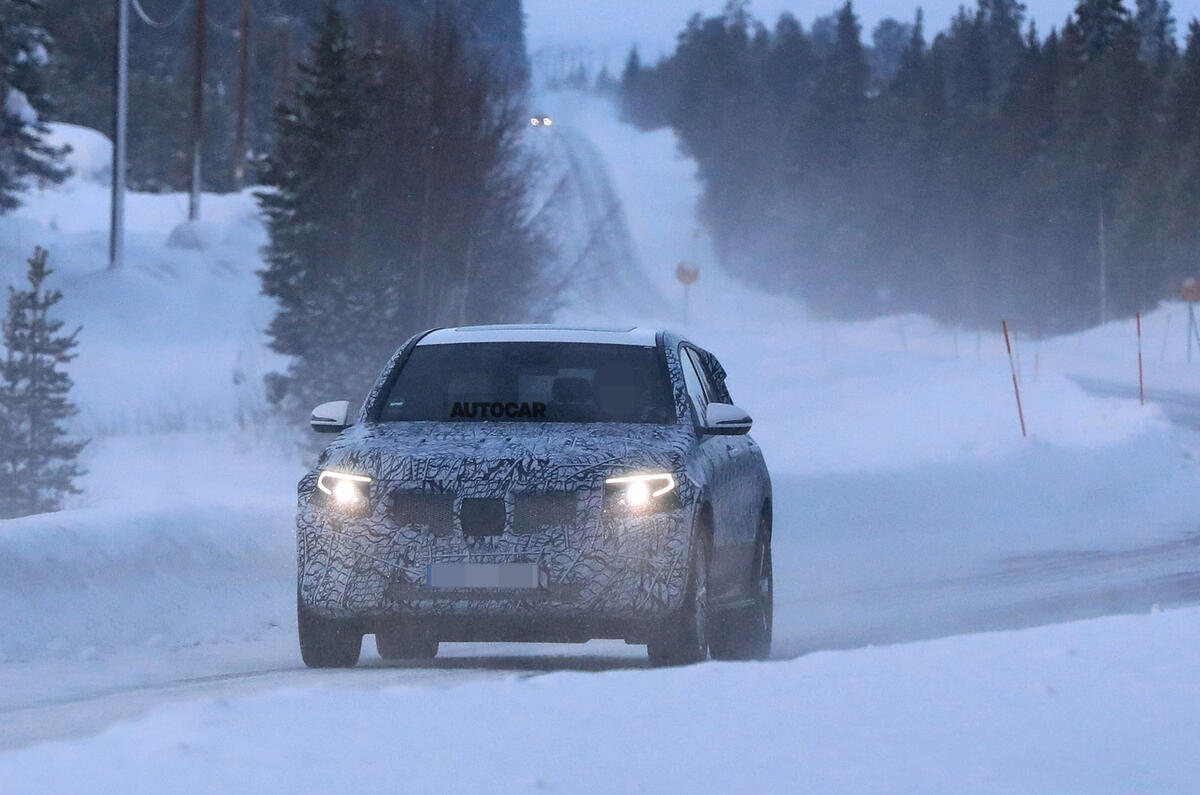
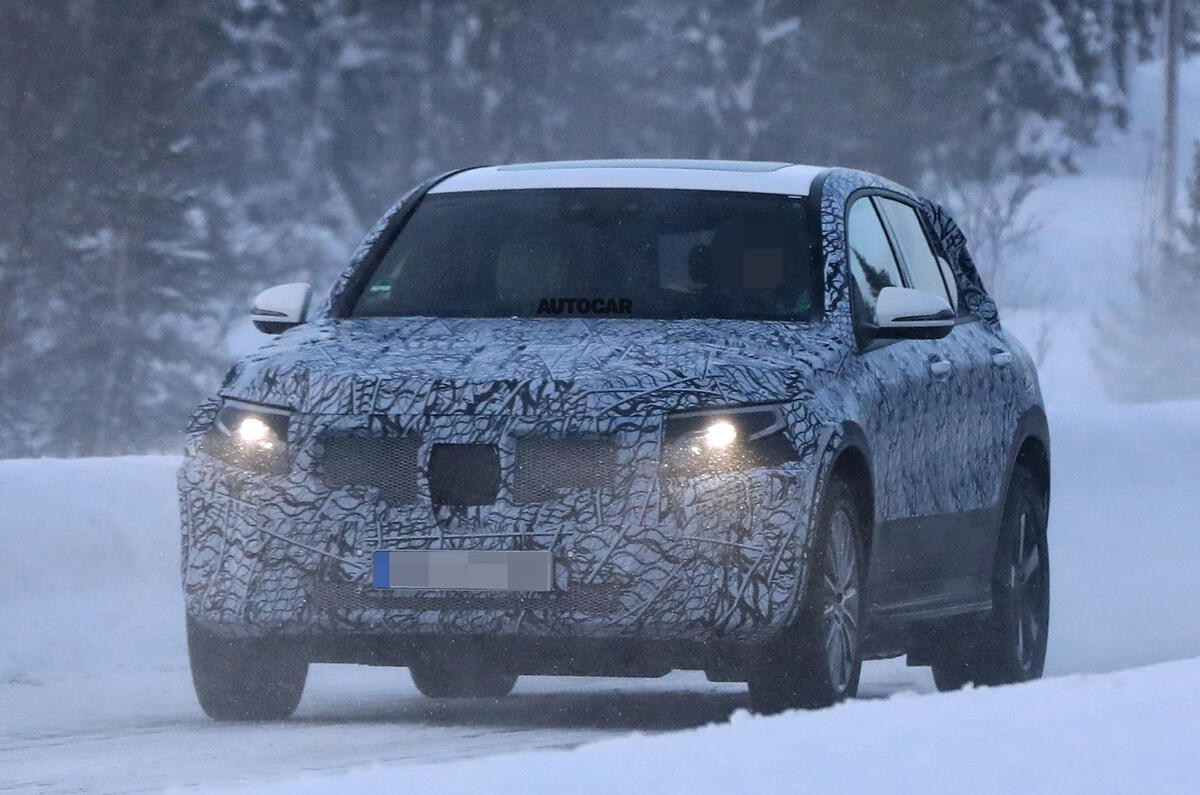
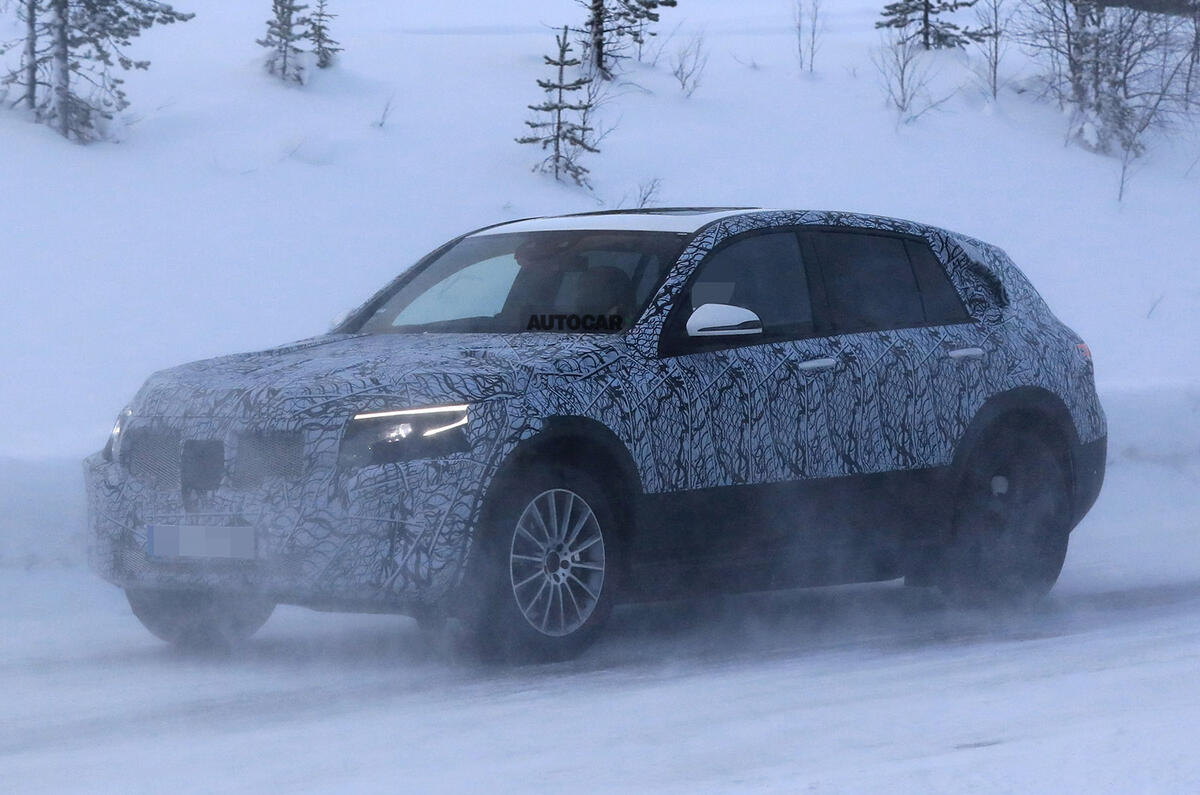
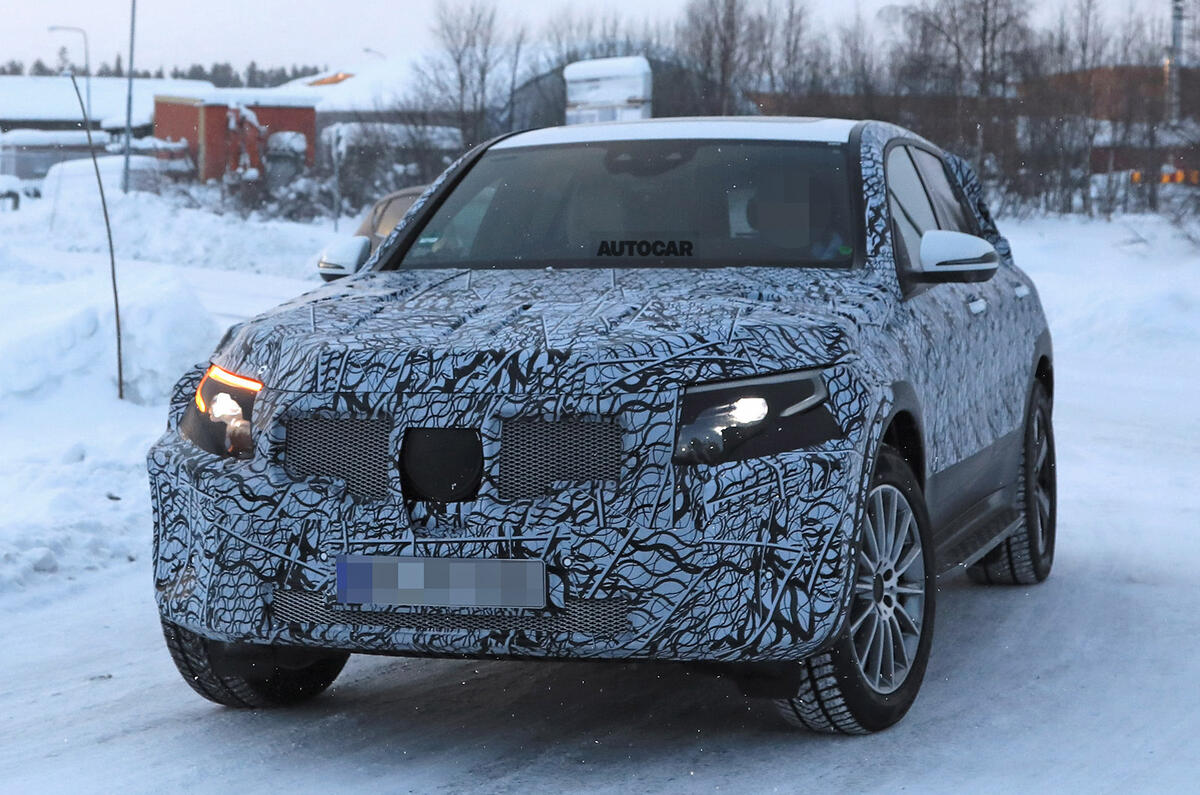
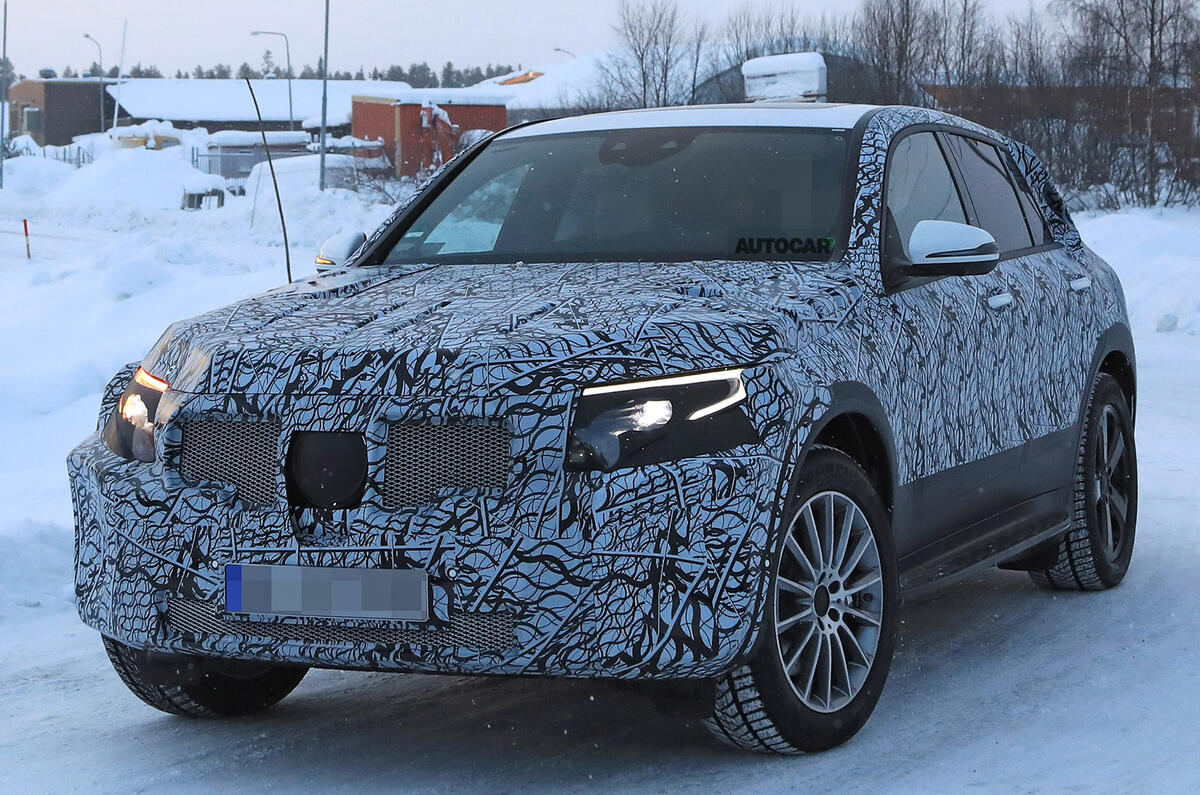
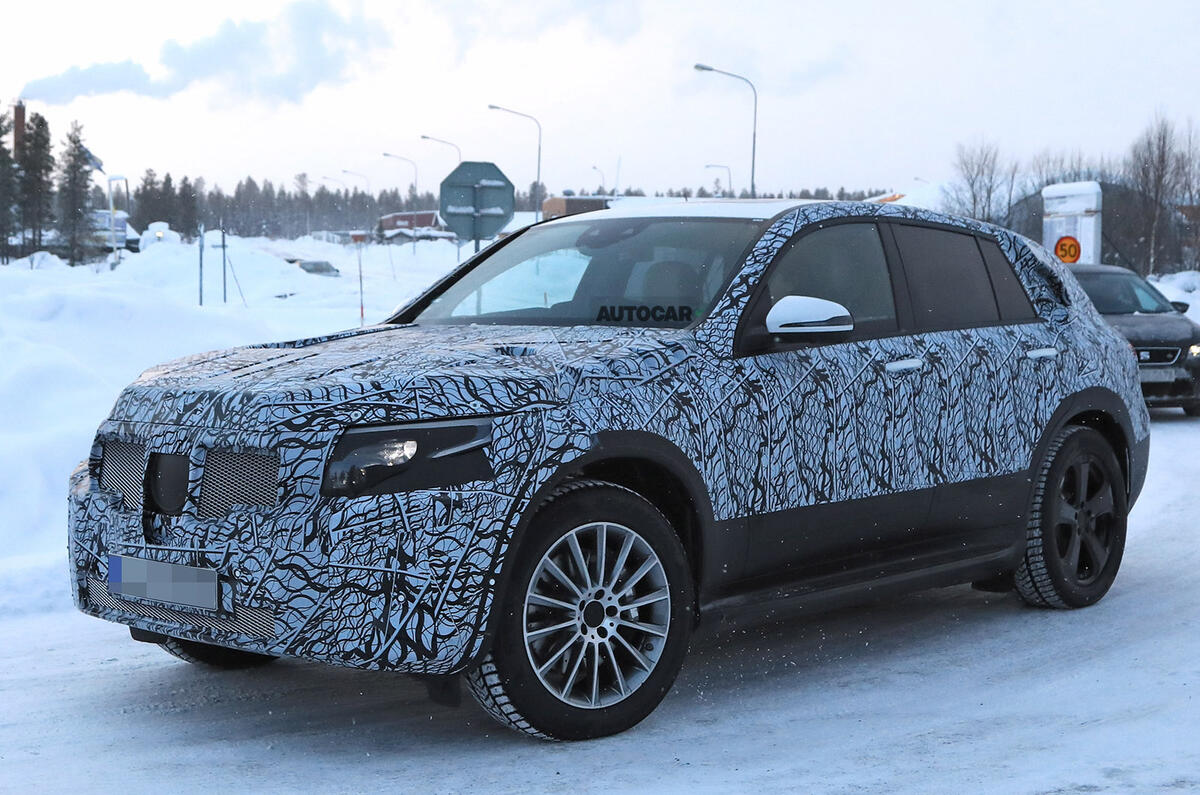
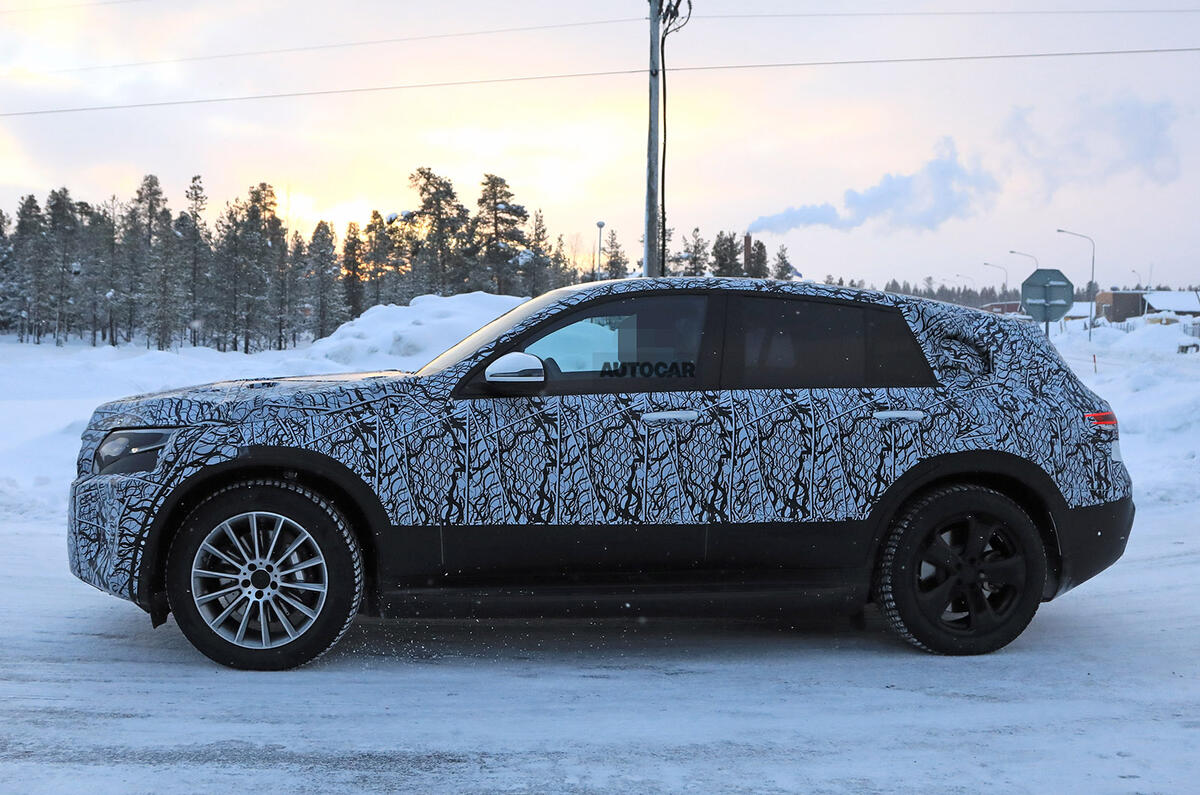
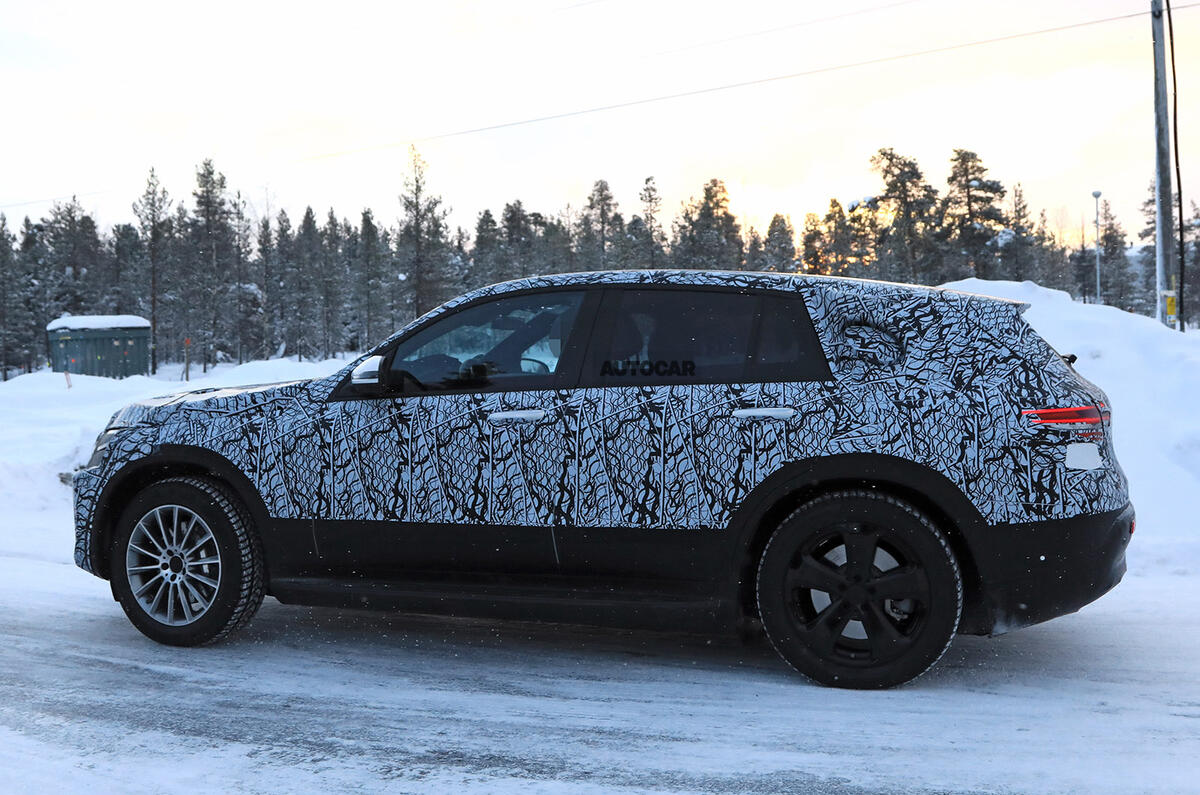
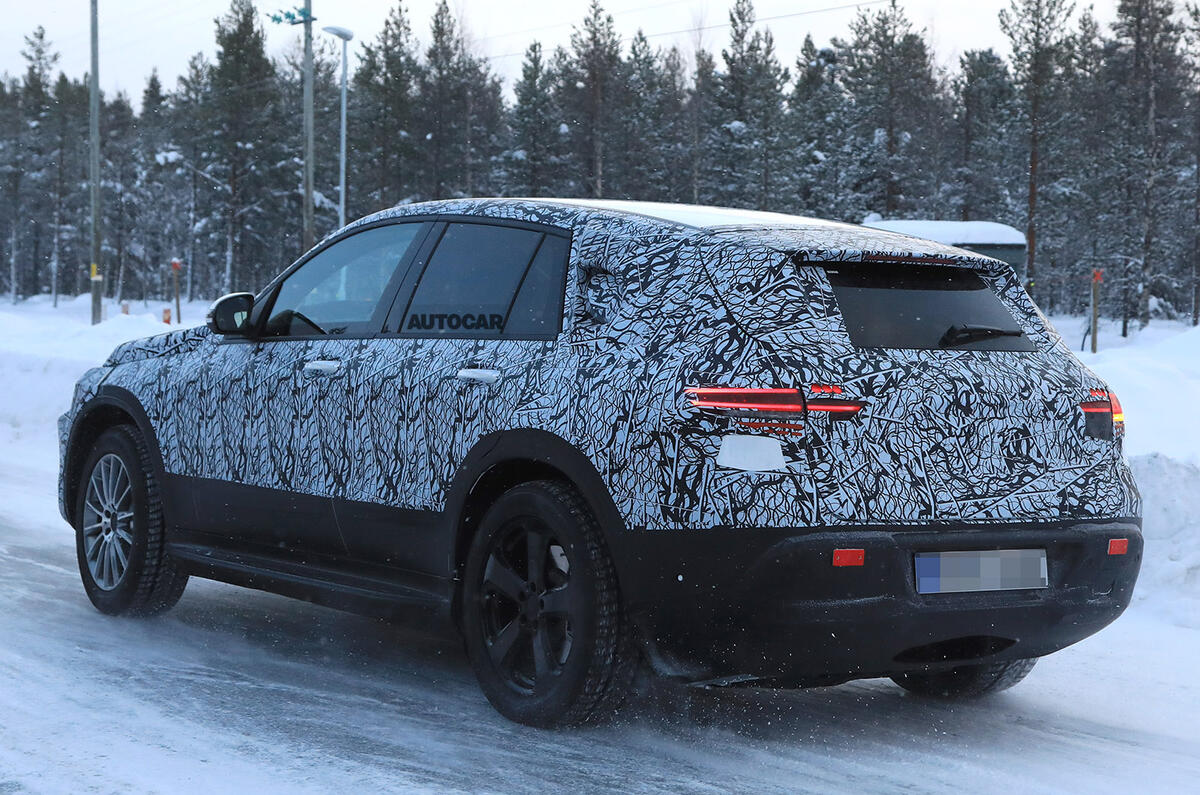
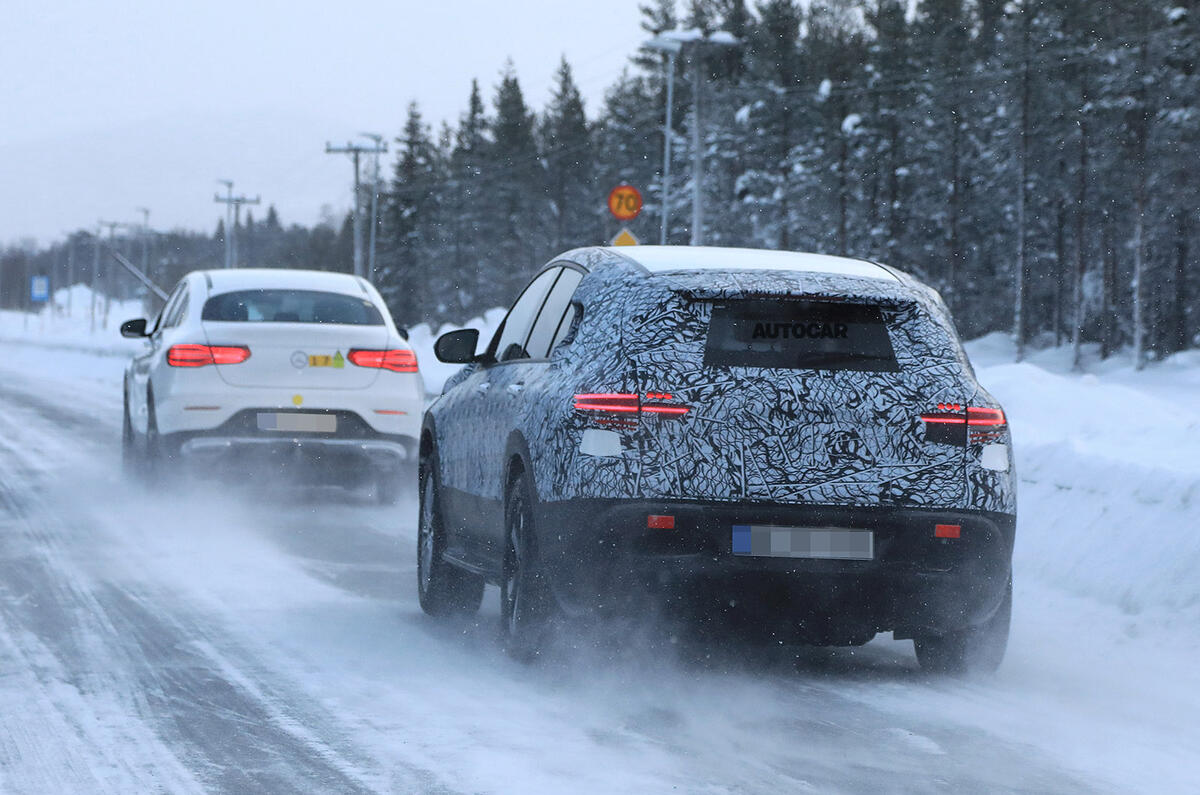
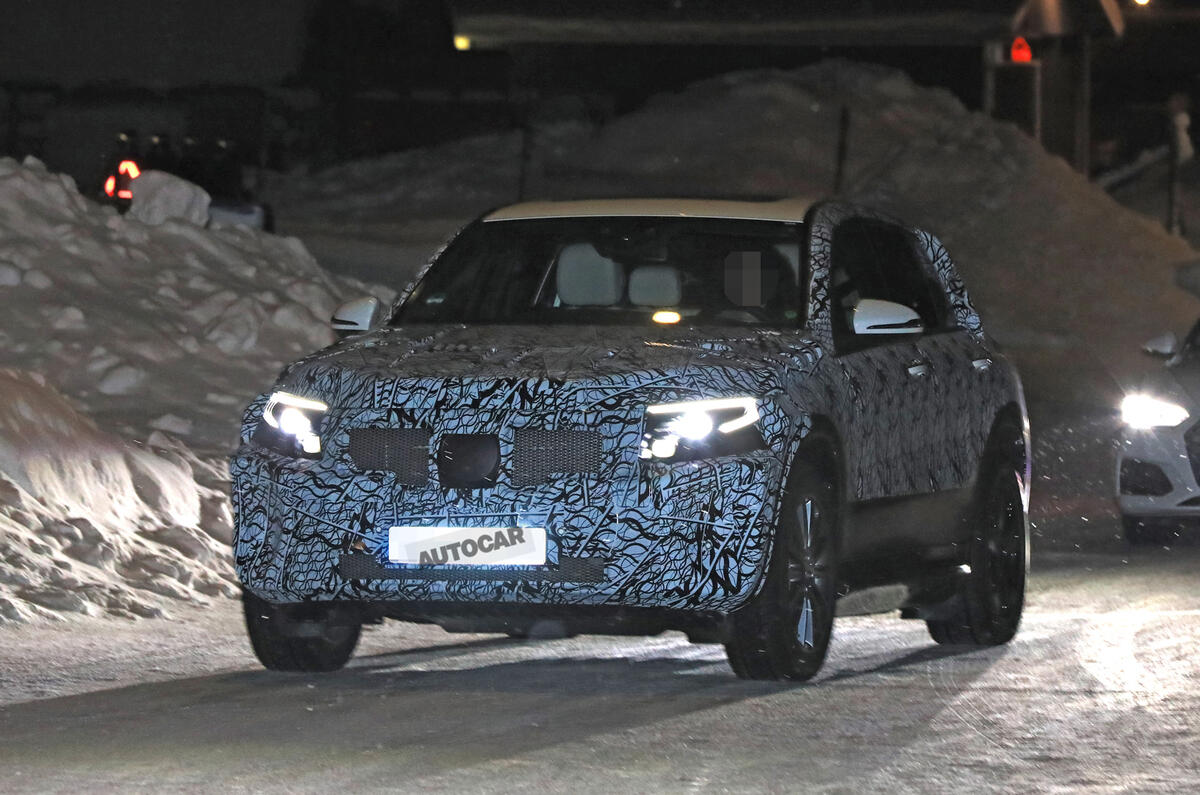
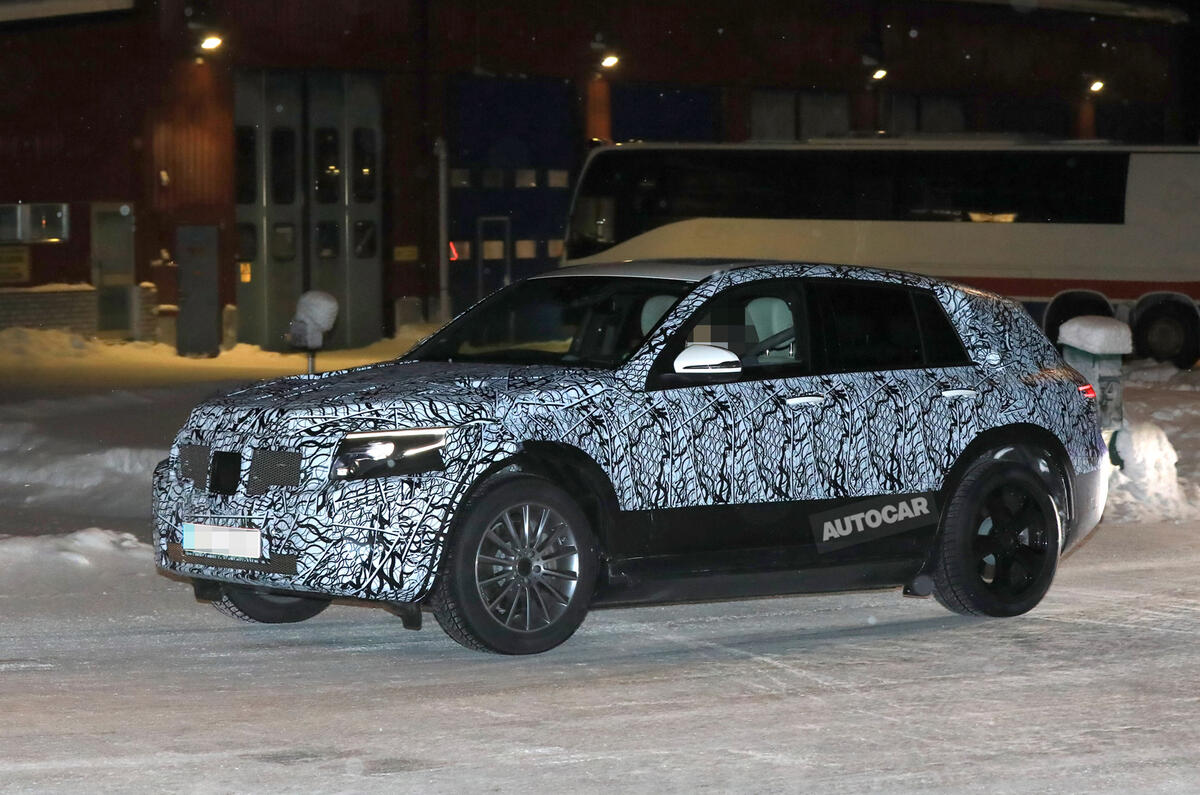
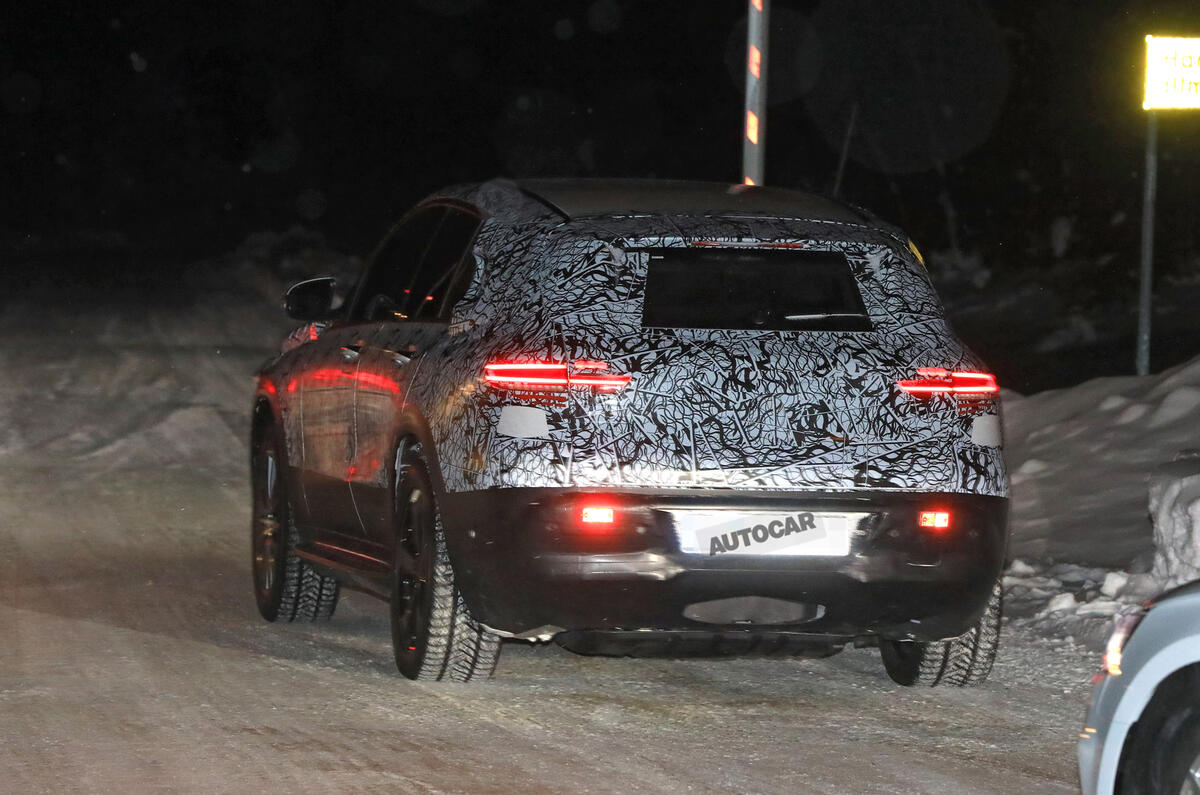
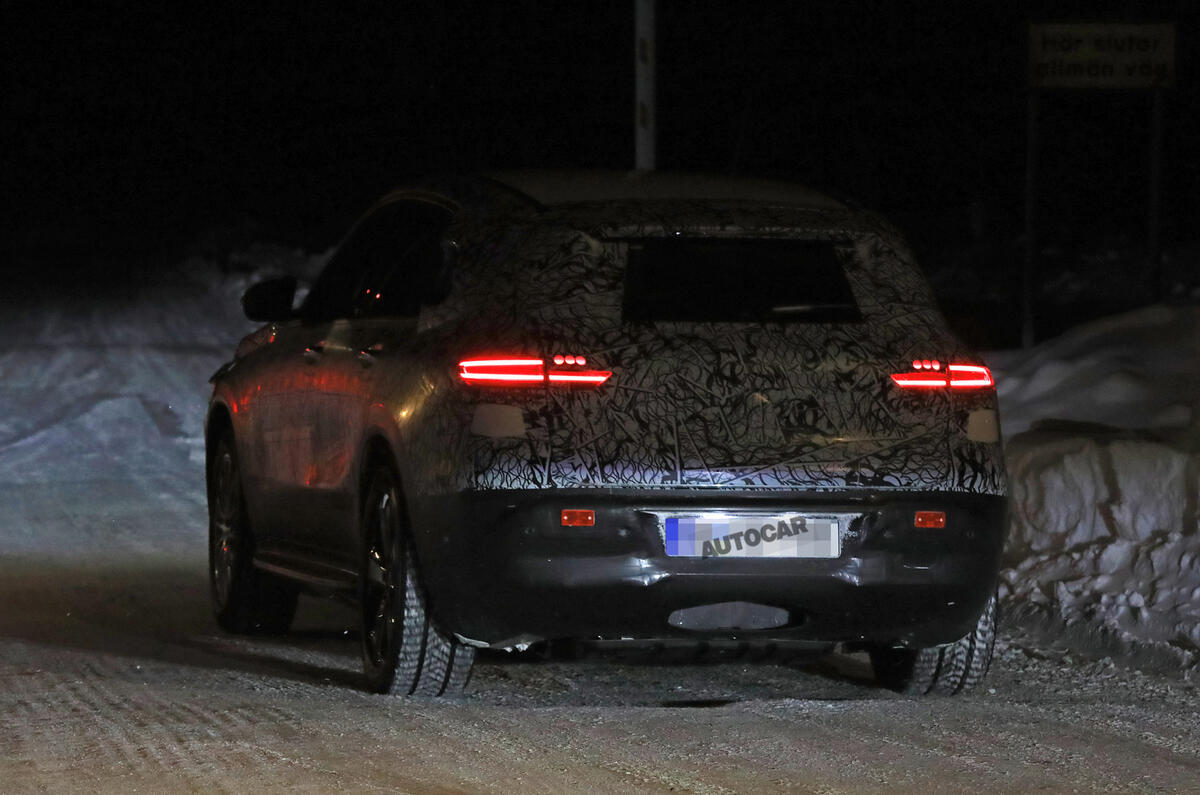
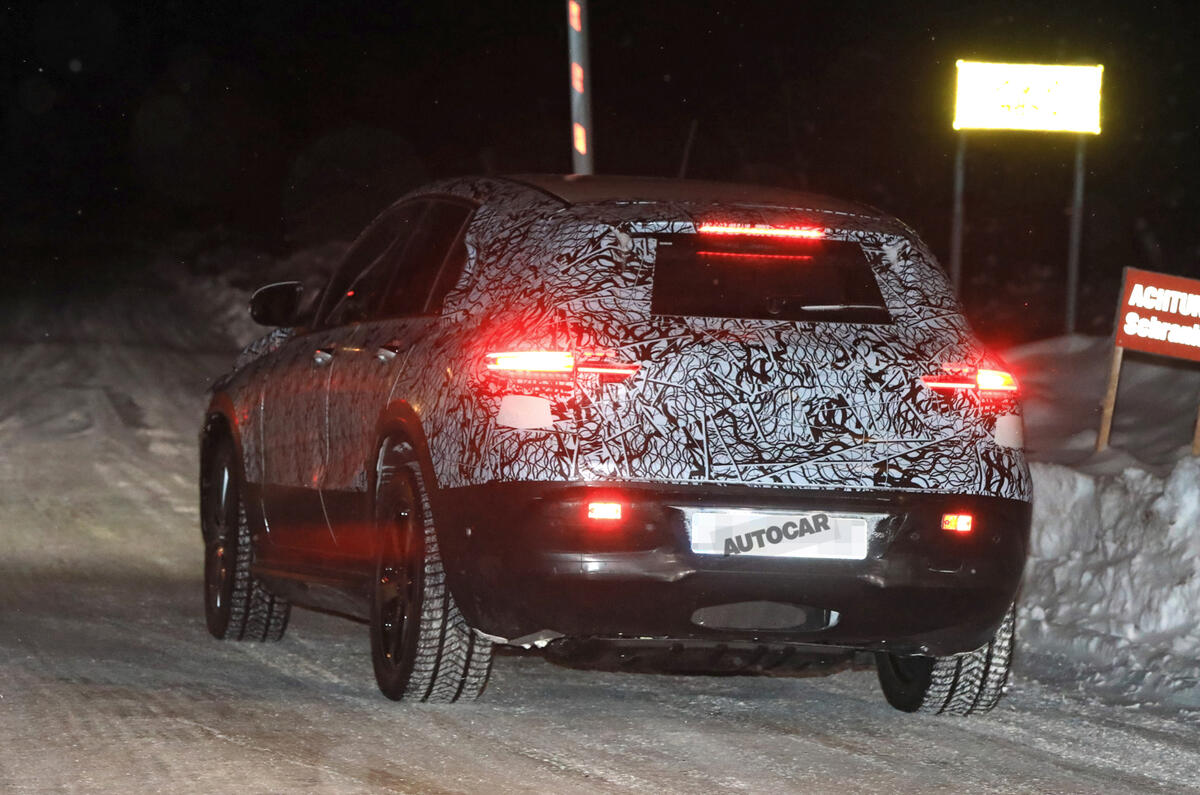
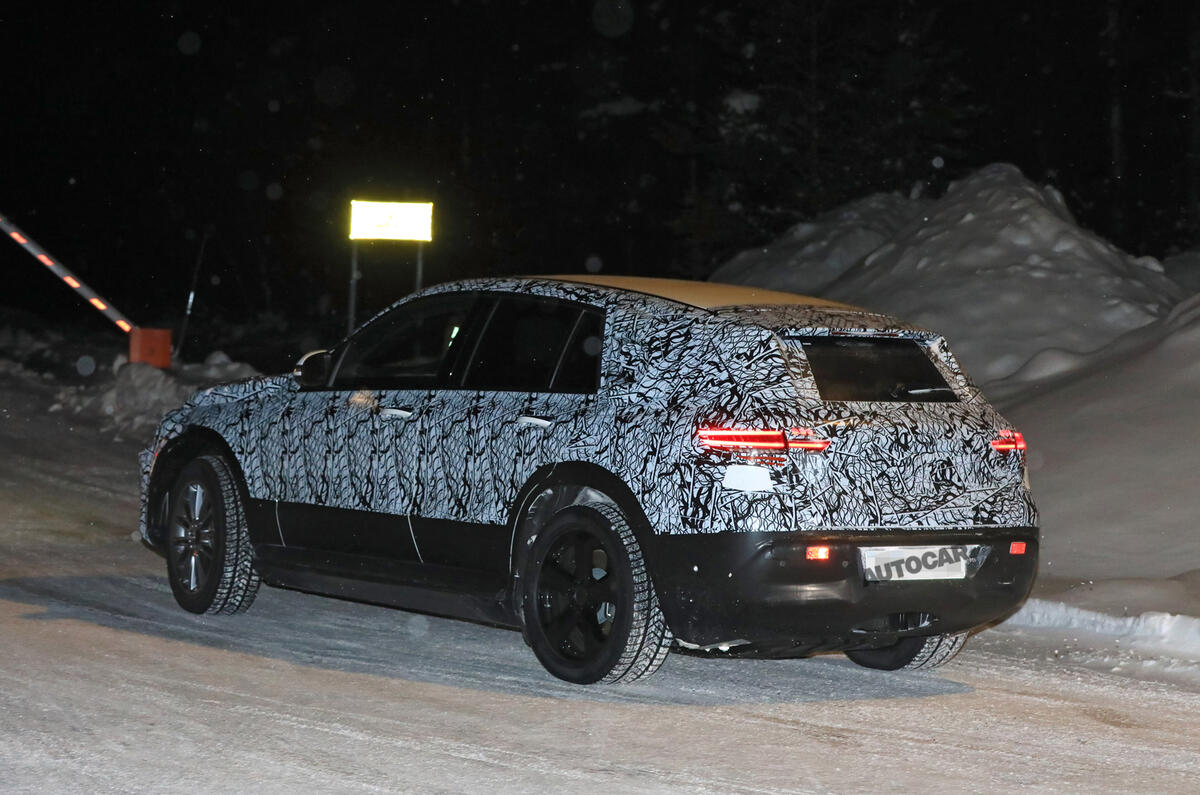
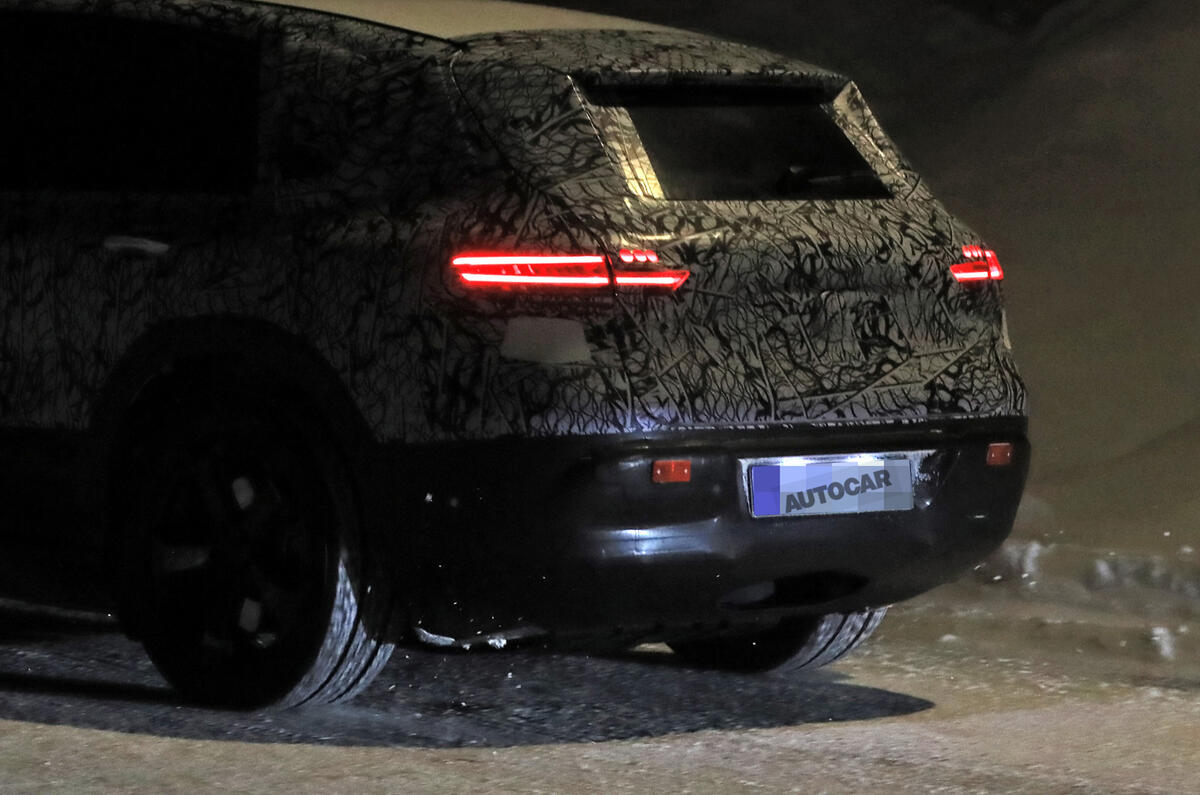
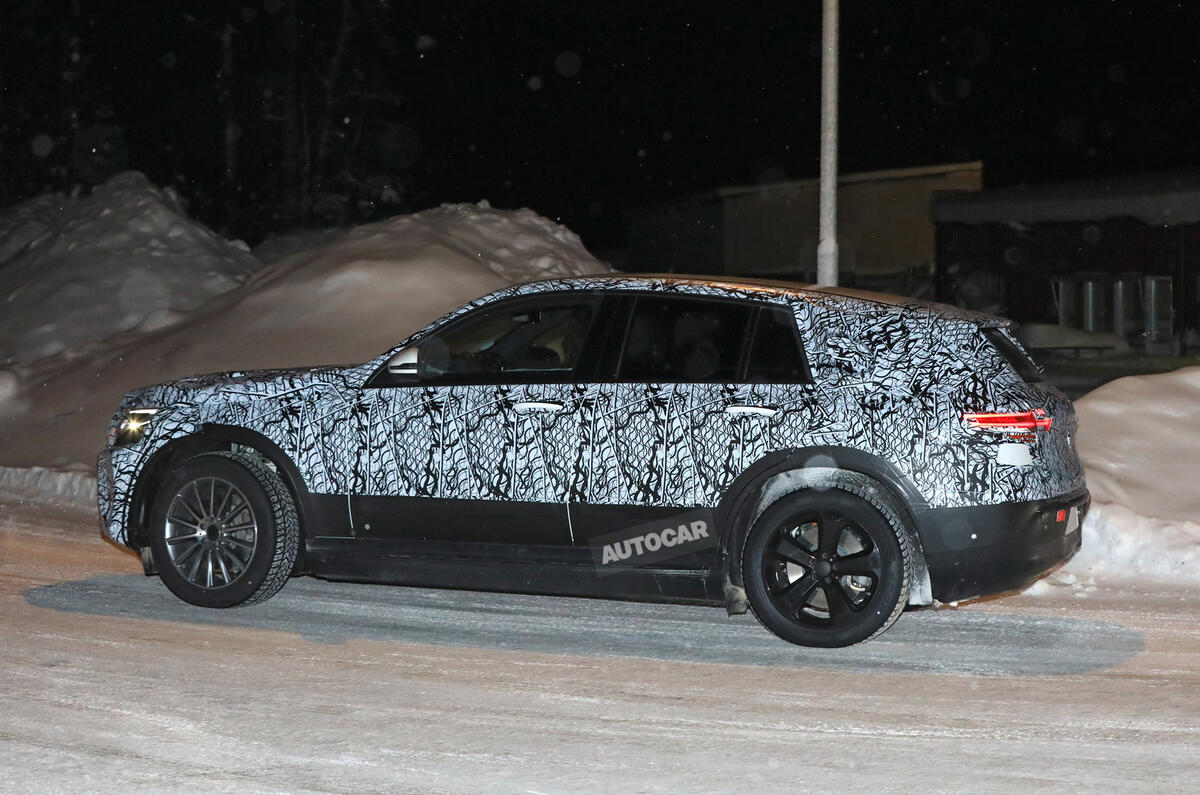
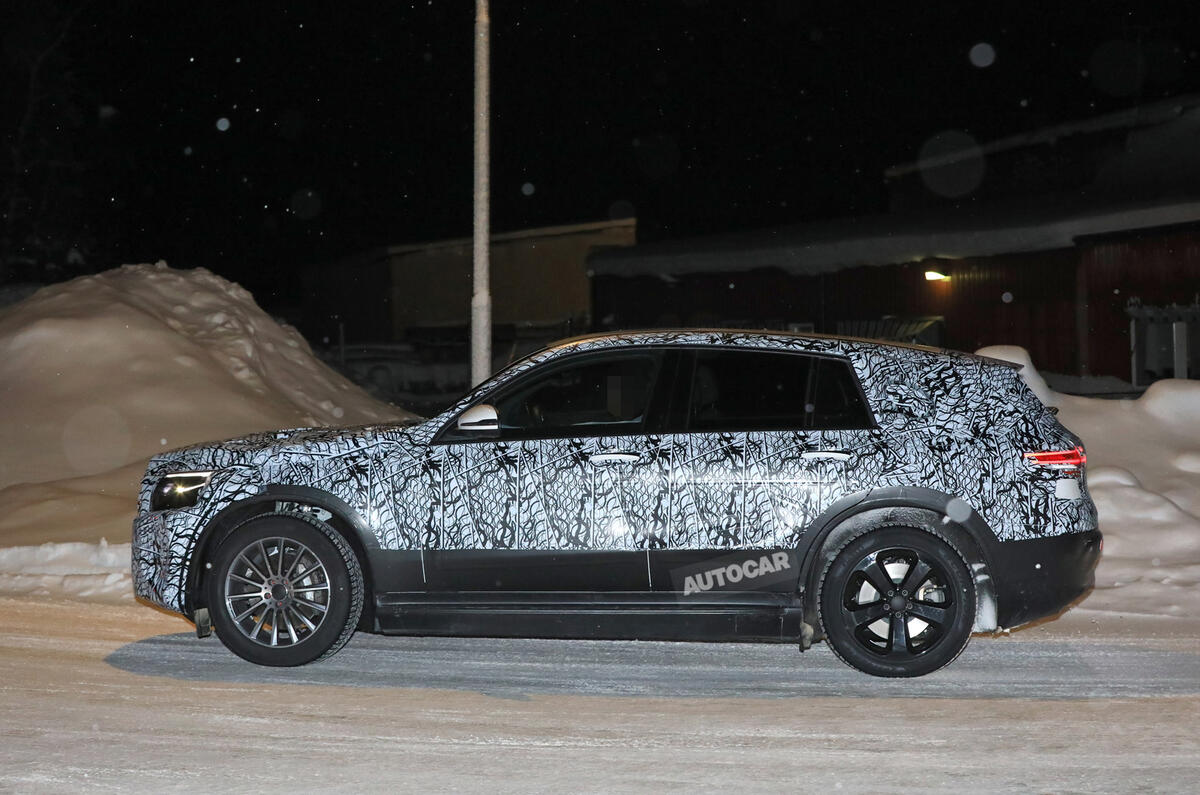
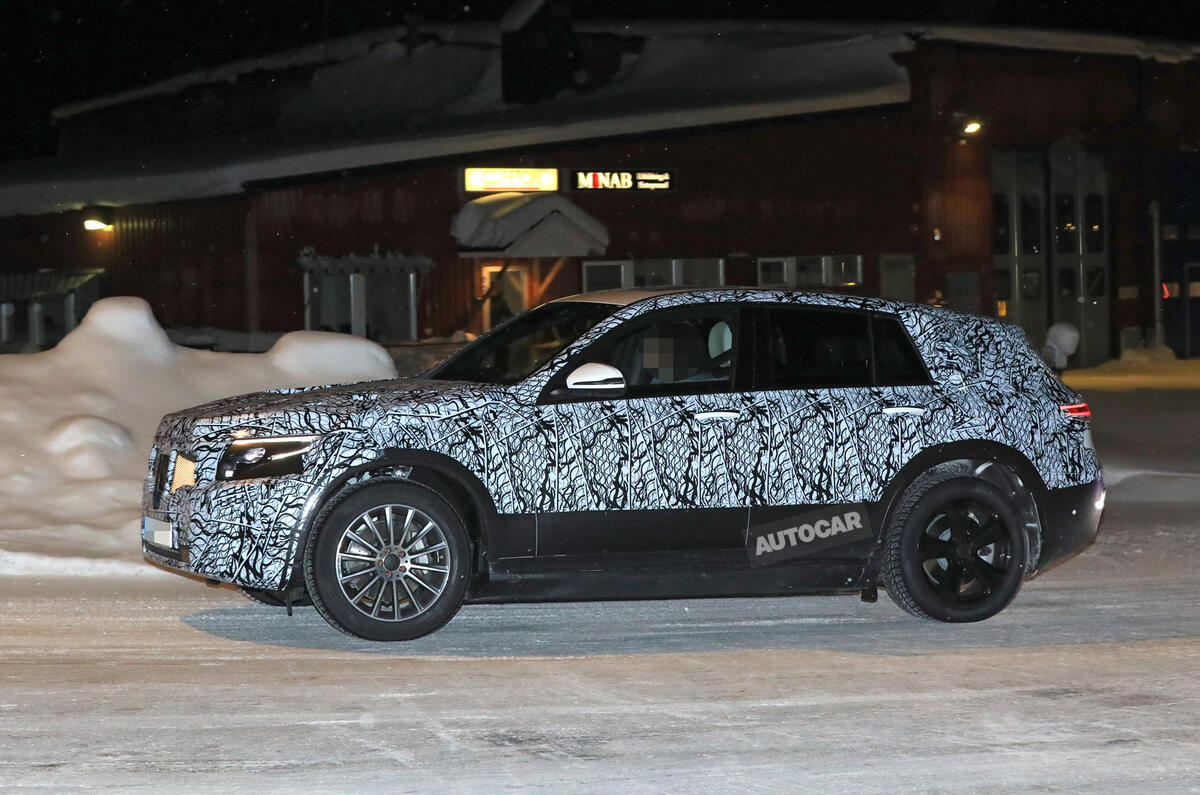
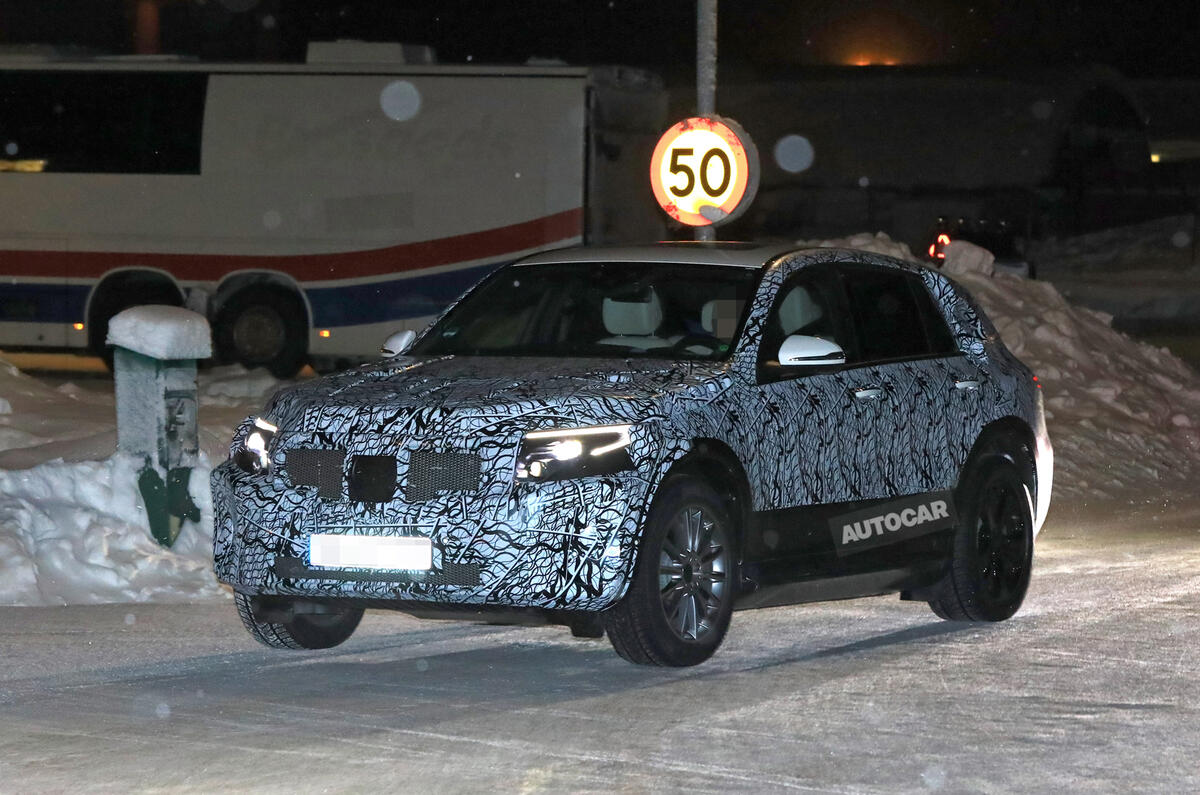

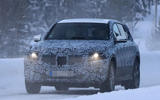
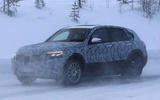

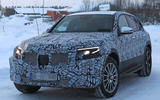
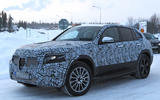
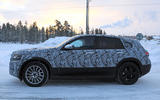

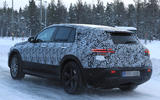

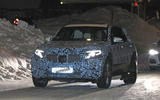







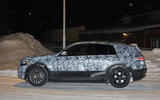
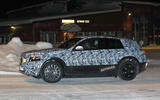


Join the debate
Hedonist
I love these heavily disguised spy shots
It could just as easily be a BMW or Land Rover.
xxxx
Just as well Tesla has a big lead
Because if the big boys hit the ground running in a couple of years Tesla might well be looking for a partner or just end up a battery provider. Obviously I hope they continue improving their end product and progress the EV message.
Hydrogen cars just went POP
Ravon
Again !
Where do we charge them ! Maybe Mr Musk will share his Superchargers, then again maybe not ?
xxxx
IMO
In my case 99% of the time I'd charge mine at home and I do 30,000 miles a year.
Hydrogen cars just went POP
Sonic
@Ravon
He already allows other manufacturers to use the superchargers. It's now up to them make their cars compatible (I believe no one has done it yet).
xxxx
Either way, over 4,000 public charging points and growing fast
An Analysis by Nissan which was reported by The Guardian stated that as of 2017 “there are now 4,100 public EV charging locations in the UK” and that by 2020 “Public electric vehicle (EV) charge points will outnumber petrol stations in the UK by the end of the decade”.
Hydrogen cars just went POP
Add your comment